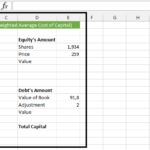How to Calculate Compound Interest in Excel
Compound interest is the interest that is earned on both the initial principal and the accumulated interest. It is different from simple interest, which is calculated only on the initial principal. Compound interest is a powerful way to grow your money over time, as it allows you to earn interest on interest.
We will show you how to calculate compound interest in Excel using two methods: the FV function and the POWER function. Both functions can take into account the frequency of compounding, such as monthly, quarterly, or annually.
The FV function
The FV function stands for future value, and it returns the value of an investment after a specified number of periods, given a constant interest rate and periodic payments. The syntax of the FV function is:
=FV(rate, nper, pmt, pv, type)
where:
- rate is the interest rate per period
- nper is the total number of periods
- pmt is the payment made each period
- pv is the present value of the investment
- type is a number that specifies when the payments are due: 0 for end of period or 1 for beginning of period
For example, suppose you invest $10,000 in a savings account that pays 5% annual interest compounded monthly. You want to know how much your investment will be worth after 10 years. To calculate the future value using the FV function, you can use this formula:
=FV(0.05/12, 10*12, 0, -10000, 0)
Note that we divide the annual interest rate by 12 to get the monthly interest rate, and we multiply the number of years by 12 to get the number of months. We also use a negative sign for the present value to indicate that it is an outflow of cash. The result is $16,470.09.
The POWER function
The POWER function returns the result of a number raised to a power. The syntax of the POWER function is:
=POWER(number, power)
where:
- number is the base number
- power is the exponent
To calculate compound interest using the POWER function, you can use this formula:
=pv*(1+rate/nper)^(nper*periods)
where:
- pv is the present value of the investment
- rate is the annual interest rate
- nper is the number of compounding periods per year
- periods is the total number of years
For example, using the same scenario as above, you can calculate the future value using the POWER function with this formula:
=10000*(1+0.05/12)^(12*10)
The result is $16,470.09, which matches the FV function.
Using these methods, you can efficiently calculate the growth of your investments and better manage your financial planning.




Leave a Reply